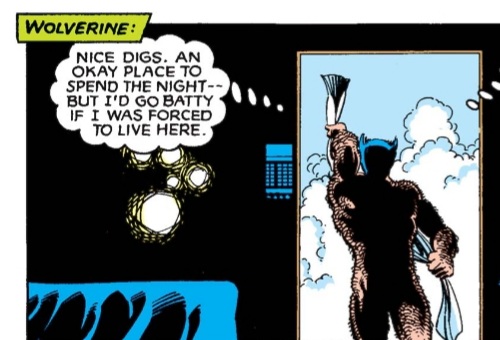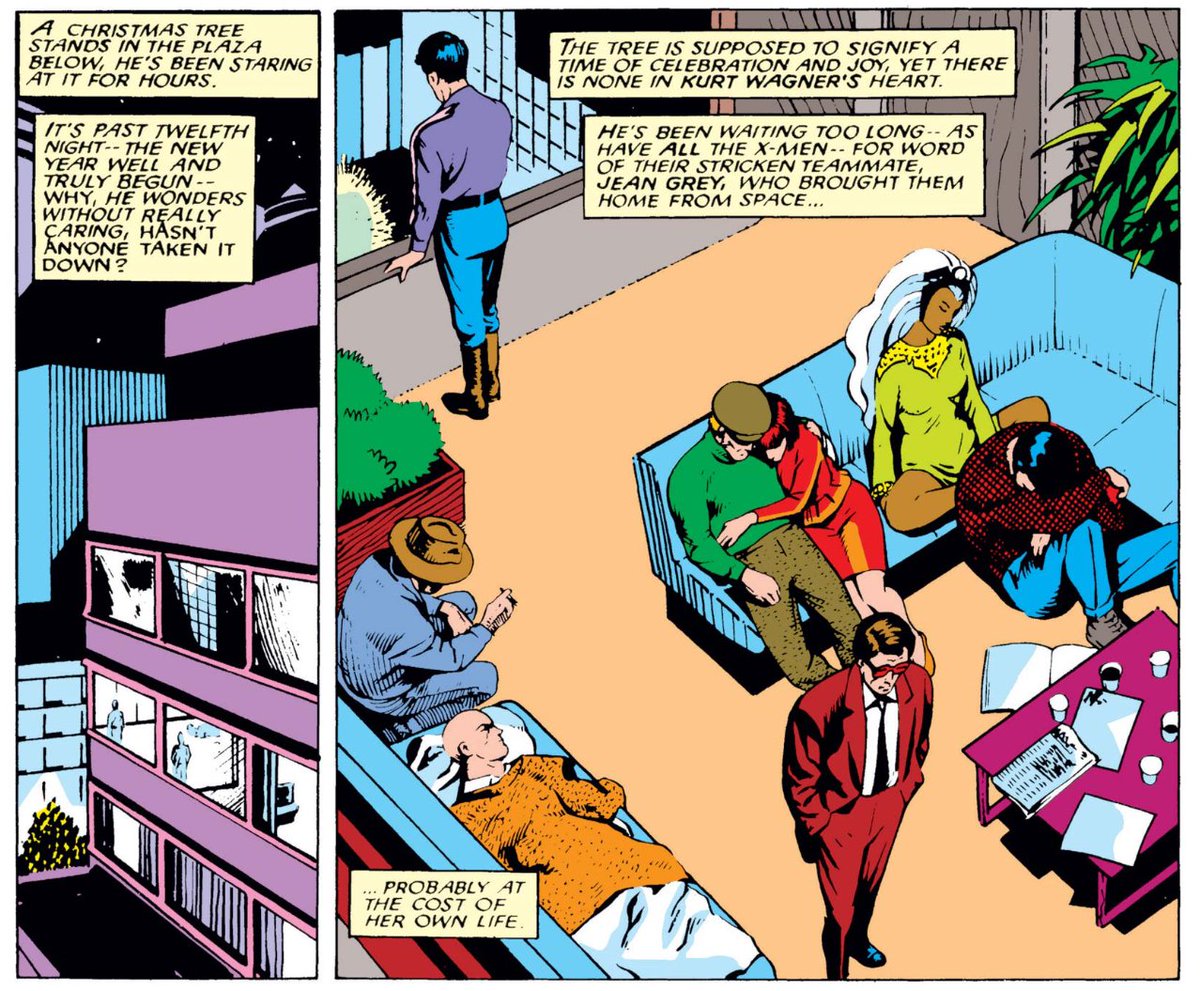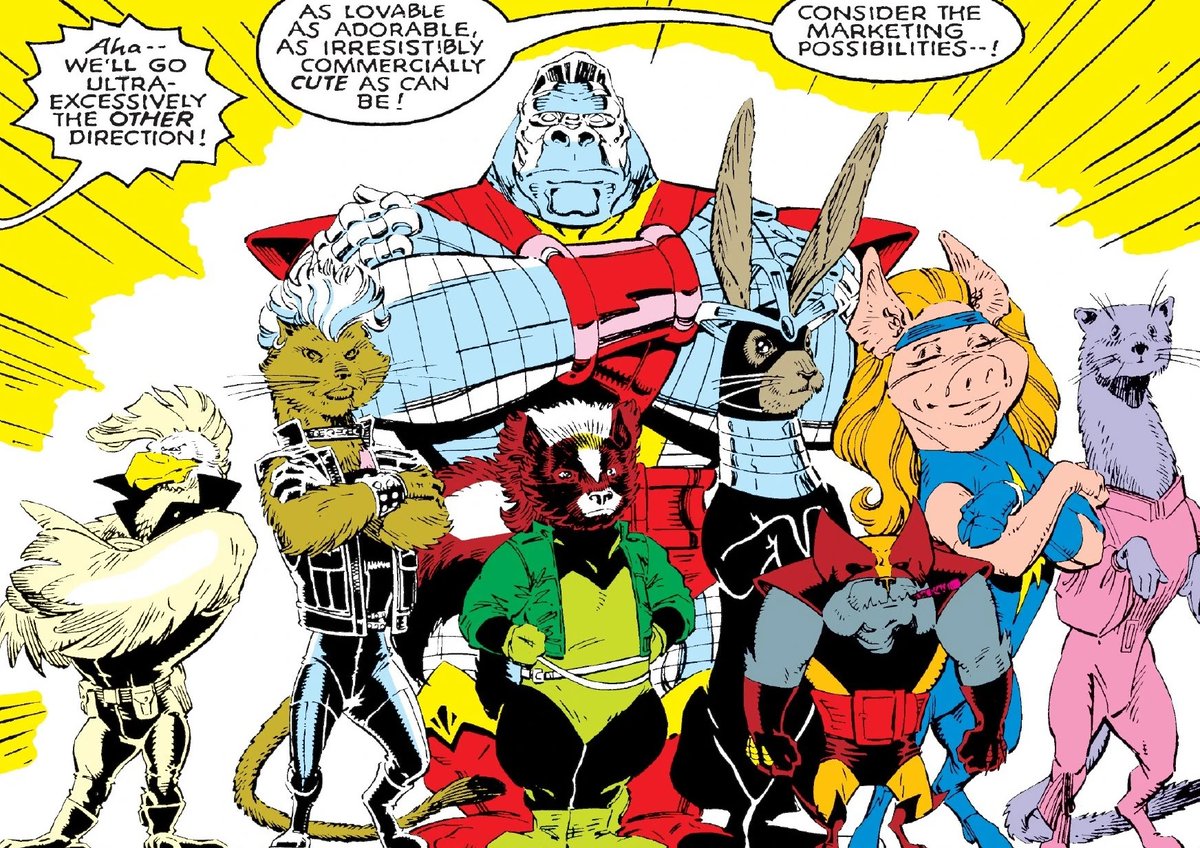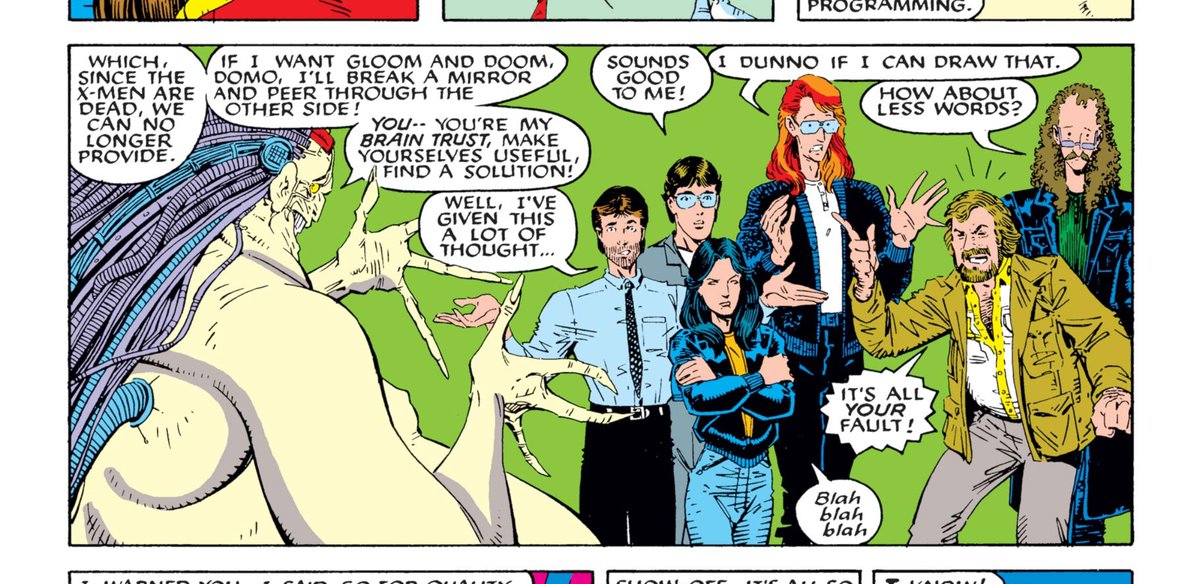
Illyana Rasputin’s initial character development unfolded along a complex and atypical trajectory, yet so much of who the character is and would become is deftly articulated in the prose found on the first page of the Magik mini-series. #xmen 1/11 

The context preceding the story is important. Claremont let the nature of Illyana’s time in limbo dangle for over a year with just a few hints at what might have been, most notably in UXM 171. It is not clear if Illyana is a victim, or a demonic villain infiltrating the team 2/11 

That changes immediately with the first words on page 1 of the mini, which gives the reader their first real interior perspective on Illyana: “I was born in a small house in a land so vast you could walk for days and never see another living soul.” 3/11 

Illyana is characterized here as reflective of the sharp contrast between the life she lived and the life she finds herself living, a life that is fully realized in the accompanying illustration which shows a sprawling mansion, complete with pool. 4/11 

Illyana also here identifies both Professor X and Piotr as agents of fate who might be partially responsible for the transition she’s undergone, thus establishing potential elements of guilt and resentment in Illyana’s two most prominent male role models. 5/11 





She next speaks to the literal loss of her childhood, a pivotal theme in defining Illyana as a tragic protagonist right from the outset of her series: “Had I remained in Siberia, today would be my eighth birthday. Instead, it is my fourteenth.” 6/11 



Then comes the big reveal: “Half my lifetime spent on earth and half in hell where I was consort to a devil.” It is notable that Limbo is referred to as “Hell” (given her suffering there) and especially significant that she defines herself as consort, not prisoner. 7/11 



The page ends with her defining and introducing herself to the reader as an agent of opposing extremes: “I am Illyana Rasputin, humanity’s savior or the means of its eternal damnation.” This of course creates what will be the compelling arc of the character for years to come 8/11 



As she says this, a single tear rolls down her cheek, thus signifying the most fundamental truth about the character: Illyana is a deeply isolated person hiding intense internal pain as well as anxiety over being perceived by those around her. 9/11 



All of this stands in sharp contrast to teen Illyana’s other appearances. In the interim between her mini and her first appearance, she’s depicted as a happy-go-lucky companion to Kitty. Here, that characterization is immediately recontextualized as a veneer over her pain. 10/11 

This would become an ongoing theme for a character who would spend most of her existence in hiding from her closest friends and allies, but here Claremont delivers some character-defining prose from which Magik will be cultivated through the decades since. 11/11 

• • •
Missing some Tweet in this thread? You can try to
force a refresh





















